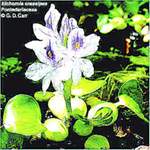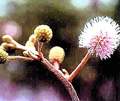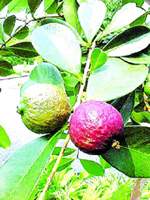|
Impacts of Invasive Alien Species The major impacts
of IAS can be summarized under the following categories: 1) Direct
exploitation or destruction of native species; 2) superior competitors
for resources; 3) hybridization with native species; 4) agricultural
pests and other impacts.
Direct
exploitation or destruction of native species: The Rainbow
Trout occurs in cold streams of the montane zone, mainly in the
Horton Plains National Park, which is known to be the sole locality
of the endemic shrimp Caridina singhalensis. As the trout is known
to feed on aquatic organisms such as crabs, shrimps, insects and
other fish, it is possible that it has affected the populations
of the above endemic shrimp as well as other endemic crabs in the
montane zone streams. The Clown knife
fish is a large voracious carnivore, which feeds on slow moving
native fish. Spreading rapidly in the streams, rivers, ponds and
marshes of the wet zone, it may have already affected the populations
of the endemic fish, which are mainly distributed in this zone. The Guppy,
which is a prolific breeder distributed in aquatic habitats throughout
Sri Lanka, has been observed to feed on the eggs of native amphibians. The recently
introduced Red-eared slider is a carnivorous turtle that can pose
a serious threat to native aquatic vertebrate fauna. The domestic/feral
cat, being a stealthy predator, is a serious threat to native reptiles,
birds and small mammals,. The domestic/feral
dogs also pose a similar threat to native vertebrates. It has been
documented that domestic/feral dogs avidly search and feed on the
eggs of marine turtles, in coastal areas. It is quite possible that
some of the alien invasive fish and molluscs also function as vectors
of various diseases that affect native fauna.
Superior
competitors for resources: The feral buffalo
and cattle pose a threat to native large herbivores such as deer,
sambhur and elephant by competing for limited food resources, especially
in the dry zone habitats. The wallowing habit of buffaloes in water
makes the aquatic habitats muddy, thereby deterring other animals
such as elephants, that visit water holes to drink water. The invasive
alien plants form thickets, and shades out and gradually displaces
native vegetation. At the extreme level, the invasive alien plants
may entirely modify the structure and function of an ecosystem,
which could occur in many ways. For instance, the invasive plant
species can produce substances that are toxic to other native plant
species and thereby make the soil unsuitable for the original native
plant communities. The aquatic invasive alien plants that form dense
mats (i.e., Water hyacinth and Salvinia) tend to accumulate greater
amount of sediment, and this, coupled with high loss of water through
increased transpiration ultimately converts wetland into terrestrial
habitats. The final outcome is the narrowing down of native biological
diversity in a particular locality.
Hybridization
with native species Agricultural
pests: Some species
of invasive flora, function as weeds in agricultural ecosystems,
and thereby result in economic losses to farmers. These include
Parthenium, Water hyacinth, Salvinia, Siam weed, Lantana, Mile-a-minute,
Cogon grass, Guinea grass, Koster's curse, T. diversifolia and M.invisa. Other impacts
of IAS: Are there
any beneficial attributes of IAS to native biodiversity? The invasive alien shrub Eupatorium riparium in the montane region serves as a browsing plant of the sambhur. The berries of Lantana camara are fed upon by several species of birds. The fruits of Strawberry Gauva and Cactus are eaten by langurs and monkeys. Information
from Dr. Channa Bambaradeniya, IUCN - Sri Lanka Country Office |
||||
Copyright © 2001 Wijeya Newspapers
Ltd. All rights reserved. |


